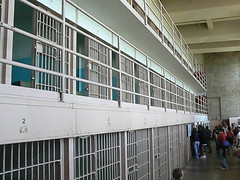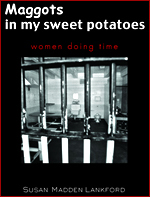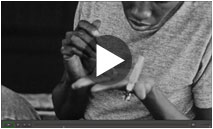 The United States incarcerates 25% of the world’s prisoners, which is disturbing since we only account for 5% of the planet’s total population. It’s a number which should make you sit up and take notice.
The United States incarcerates 25% of the world’s prisoners, which is disturbing since we only account for 5% of the planet’s total population. It’s a number which should make you sit up and take notice.
One of the largest factors behind this statistic is the privatized prison, something that did not exist before 1984. It was in that year that the Corrections Corporation of America received a contract to operate a public jail in Hamilton County, TN, the nation’s first-ever private prison was born.
The American Civil Liberties Union just released a study examining the history of prison privatization – Banking on Bondage: Mass Incarceration and Private Prisons – which clearly demonstrates how corporate profit seeking has caused our prison populations to explode.
Rania Khalek has a brilliant condensed version of the report’s findings on AlterNet, replete with useful documentation and links. I highly advise taking a few moments to read the whole thing, it is more than worth your time. Right now we will have to settle for an excerpt concerning how this privatization impact juvenile justice:
There is no clearer example of dangers associated mixing profit-making and juvenile rehabilitation than the Walnut Grove Youth Correctional Facility (WGYCF) operated by the GEO Group in Mississippi. WGYCF, which has been called “the deepest depths of hell,” is the nation’s largest juvenile prison. It houses 1,200 young males between the ages of 13 and 22, 67 percent of whom are incarcerated for non-violent offenses. The facility was originally established by the Mississippi state legislature to create a safe environment for juveniles charged as adults by keeping them separate from the cruel and harsh conditions often found in adult prisons.
Unfortunately, that mission is incompatible with the priorities of the for-profit prison industry. As it turns out, conditions at WGYCF are so atrocious that the ACLU and Southern Poverty Law Center have teamed up to file a class-action lawsuit on behalf the inmates against the prison operator (GEO Group), prison administrators, and state officials.
The complaint alleges, “The for-profit entities that manage WGYCF perpetuate violence and corruption.” More specifically, youth have been kicked and punched while handcuffed, others stripped naked and confined to solitary for weeks at a time. Another inmate was “held hostage in his cell for almost 24 hours, brutally raped and physically assaulted after prison staff failed to heed his plea for protection.” Another lives with permanent brain damage after suffering multiple stabbings and beatings that prison staff are described as having been complicit in.
On the other side of the political aisle similar concerns are being raised by Fox News, which looks at the statements to this effect by the corrections companies themselves:
Corrections Corporation of America (CXW), the industry leader based in Nashville, Tenn., with more than $1.7 billion in 2010 annual revenues and capacity for more than 90,000 prisoners, said a drop in tough criminal sentences means a drop in revenues. According to its 2010 annual report:
‘Demand for our facilities and services could be adversely affected by the relaxation of enforcement efforts, leniency in conviction or parole standards and sentencing practices, or through the decriminalization of certain activities that are currently proscribed by our criminal laws.’ […]
‘Any changes with respect to drugs and controlled substances or illegal immigration could affect the number of persons arrested, convicted, and sentenced, thereby potentially reducing demand for correctional facilities to house them,’ the company’s annual report said.
Boca Raton, Fla.-based GEO Group Inc. (GEO), in the industry’s No. 2 spot with nearly $1.3 billion in 2010 annual revenues and capacity for 81,000 prisoners, offers similar language in its 2010 annual report: ‘A decrease in our occupancy rates could cause a decrease in revenues and profitability.’
When Fox and AlterNet agree it’s worth paying attention. For private companies keeping the prisons filled is their financial bottom line, one that should never be allowed to trump the lives wasted within their walls. The money motive is so strong that their approach continues to remain dominant despite reams of evidence that rehabilitation is cheaper and more effective.
For these companies the safety of our streets does not even enter into the equation. It’s all about the profit margin.
Image Source: 401K on Flickr, used under it’s Creative Commons license

 The fight to fix our juvenile justice system just got a shot in the arm. Yesterday the U.S. Department of Justice’s Office of Juvenile Justice and Delinquency Prevention (OJJDP) and the John D. and Catherine T. MacArthur Foundation announced a new partnership supporting innovative and effective reforms in treatment and services for youth involved in the juvenile justice and child welfare systems.
The fight to fix our juvenile justice system just got a shot in the arm. Yesterday the U.S. Department of Justice’s Office of Juvenile Justice and Delinquency Prevention (OJJDP) and the John D. and Catherine T. MacArthur Foundation announced a new partnership supporting innovative and effective reforms in treatment and services for youth involved in the juvenile justice and child welfare systems.
 This week a Supreme Court judge in Georgia put forth her thoughts on why the state’s justice system desperately needs fixing. Let’s start with the pertinent quotes as reported by James Swift at the
This week a Supreme Court judge in Georgia put forth her thoughts on why the state’s justice system desperately needs fixing. Let’s start with the pertinent quotes as reported by James Swift at the














